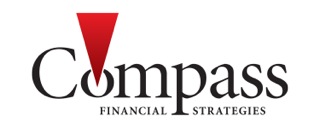Education
Is your real purpose for your money to educate your children?
Things to consider
- Start early and put as much as possible into an account designated for education
- Current cost estimates
- State-supported university annual cost about $23,000 • Private university annual cost about $40,000
- Community college (live at home) annual cost about $8,000
Tools
- 529 Plan – offers a tax deferred benefit
- Individual account – designated for educational expenses
- Loans – borrow as little as possible (payback may be difficult)
- Scholarships
Definitions
- Age of children
- The current age of your children. This calculator is based on your children beginning their college education at age 18. The difference between their current age and 18 is the number of years you have to save.
- Annual tuition
- The current estimated cost of one year of tuition and books. This amount should be per child and be specific to the school they may be interested in attending. The average published costs of college for the 2011-12 school year (including tuition, room and board, books, supplies, transportation and other personal expenses) as reported by the College Board:
| U.S. Undergraduate College Costs for 2011-12 School Year Source: College Board’s 2011 Trends in College Pricing, www.collegeboard.com |
||||
| Type | Tuition and fees | Room & Board | Total | Change from 2010-11 |
|---|---|---|---|---|
| Public 4-Year (in-state tuition) | $8,244 | $8,887 | $17,131 | 6.0% |
| Public 4-Year (out-of-state tuition) | $20,770 | $8,887 | $29,657 | 5.2% |
| Private 4-Year | $28,500 | $10,089 | $38,589 | 4.4% |
For the purposes of this calculator all expenses are assumed to be due at the end of the year.
- Room and board
- The current estimated cost of one-year room and board. Like tuition and books, this amount should be per child and specific to the school they may be interested in attending. For the purposes of this calculator, all expenses are assumed to be due at the end of the year.
- Education cost inflation
- This is the percentage that you expect educational costs to increase per year. Data provided by The College Board’s “Trends in College Pricing 2011″ put tuition, room and board increases at approximately 6.4% per year for the last ten years.
- Current amount
- The total amount you currently have saved for your children’s education.
- Monthly contributions
- The dollar amount you plan to save per month toward your children’s education. All amounts are assumed to be added to your account at the beginning of the month.
- Rate of return
- This is the annually compounded rate of return you expect from your investments. This will also be the rate used if you end up with a negative balance and need to borrow money to meet your goal. The actual rate of return is largely dependent on the type of investments you select. The S&P 500 for the ten years ending on December 31st, 2011 had an annual compounded rate of return of 2.92%, including reinvestment of dividends. From January 1970 through the end of 2011, the average annual compounded rate of return for the S&P 500, including reinvestment of dividends, was approximately 10.01% (source: www.standardandpoors.com). Since 1970, the highest 12-month return was 61% (June 1982 through June 1983). The lowest 12-month return was -43% (March 2008 to March 2009). Savings accounts at a bank may pay as little as 0.25% or less but carry significantly lower risk of loss of principal balances.
It is important to remember that these scenarios are hypothetical and that future rates of return can’t be predicted with certainty and that investments that pay higher rates of return are generally subject to higher risk and volatility. The actual rate of return on investments can vary widely over time, especially for long-term investments. This includes the potential loss of principal on your investment. It is not possible to invest directly in an index and the compounded rate of return noted above does not reflect sales charges and other fees that funds and/or investment companies may charge.
Information and interactive calculators are made available to you as self-help tools for your independent use and are not intended to provide investment advice. We cannot and do not guarantee their applicability or accuracy in regards to your individual circumstances. All examples are hypothetical and are for illustrative purposes. We encourage you to seek personalized advice from qualified professionals regarding all personal finance issues.


